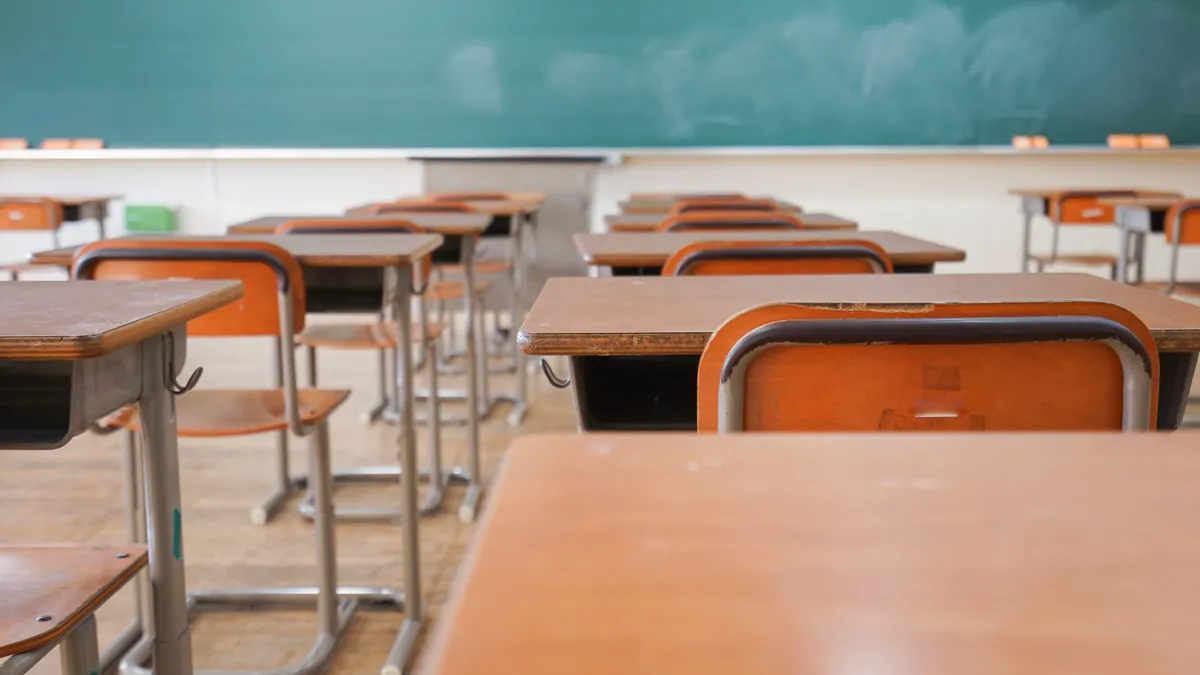Dive Brief:
- The percentage of students nationwide who were chronically absent during the 2021-22 school year almost doubled compared to pre-pandemic rates, rising from 16% to 30%, according to a 50-state data analysis by the Annie E. Casey Foundation.
- While chronic absenteeism is one of the key challenges hindering students’ success, the Casey Foundation found adverse childhood experiences — like family economic hardship or parents divorcing, separating or going to jail — are another major contributing factor. Some 40% of students had gone through an adverse childhood experience in 2021-22, the foundation said.
- To address these challenges, the Casey Foundation recommends increasing students’ access to low-cost or free school meals, high-dosage tutoring and a reliable internet connection. States and school districts should also invest in community schools and improve attendance tracking, the report said.
Dive Insight:
The report from the Casey Foundation highlights recent data from the National Assessment of Educational Progress, particularly noting how chronic absenteeism can impact students’ reading proficiency. The Baltimore-based private philanthropy focuses on improving outcomes for children and young people.
When looking at the percentage of 4th grade students who scored at or above the reading proficiency level, the foundation found students who had perfect attendance within a month’s time in 2022 saw the highest rate of reading proficiency at 40%. The more days a student missed within the month, the more likely their reading scores dropped.
Among 4th grade students who missed one to two days of school, for instance, only 34% had a proficient reading score. At the low end, just 14% of students who missed more than 10 days had a proficient reading score.
The factors driving chronic absenteeism — which include housing insecurity, poverty, unmet basic needs, health issues and student disengagement — were in play long before the COVID-19 pandemic, the Casey Foundation said. However, its report cited research showing that the pandemic both worsened these underlying causes and developed new challenges, such as an uptick in anxiety and other mental health issues among students, that can ultimately heighten chronic absenteeism rates.
Other contributors that are likely to exacerbate learning loss appear at the school and district level.
For instance, high-poverty and high-minority school districts that relied more on remote and hybrid instruction during the 2020-21 school year saw greater declines in academic achievement, according to a May 2023 study by Harvard University’s Center for Education Policy Research and Stanford University’s Educational Opportunity Project.
On top of that, researchers found pandemic learning loss was also tied to a district’s poverty rates, racial makeup and instructional modes — all of which impacted students across different racial and socioeconomic subgroups in similar ways.
Tackling the rise in student chronic absenteeism is among educational priorities for the Biden administration. In May, a White House-sponsored event for federal, state and local education leaders stressed that combating chronic absenteeism must be a community-based effort.
During the event, Rhode Island Gov. Daniel McKee shared how the state is approaching the issue in several ways, including an initiative that aims to shift away from the traditional 180-day school year model to a year-round one with more educational and career readiness opportunities. Rhode Island also has an online dashboard that tracks school-by-school attendance, which is updated daily.
Additionally, the White House Council of Economic Advisers flagged in September that the sweeping rise in chronic absenteeism between the 2018-19 and 2021-22 school years could have substantially driven the noticeable dips in post-pandemic test scores.













